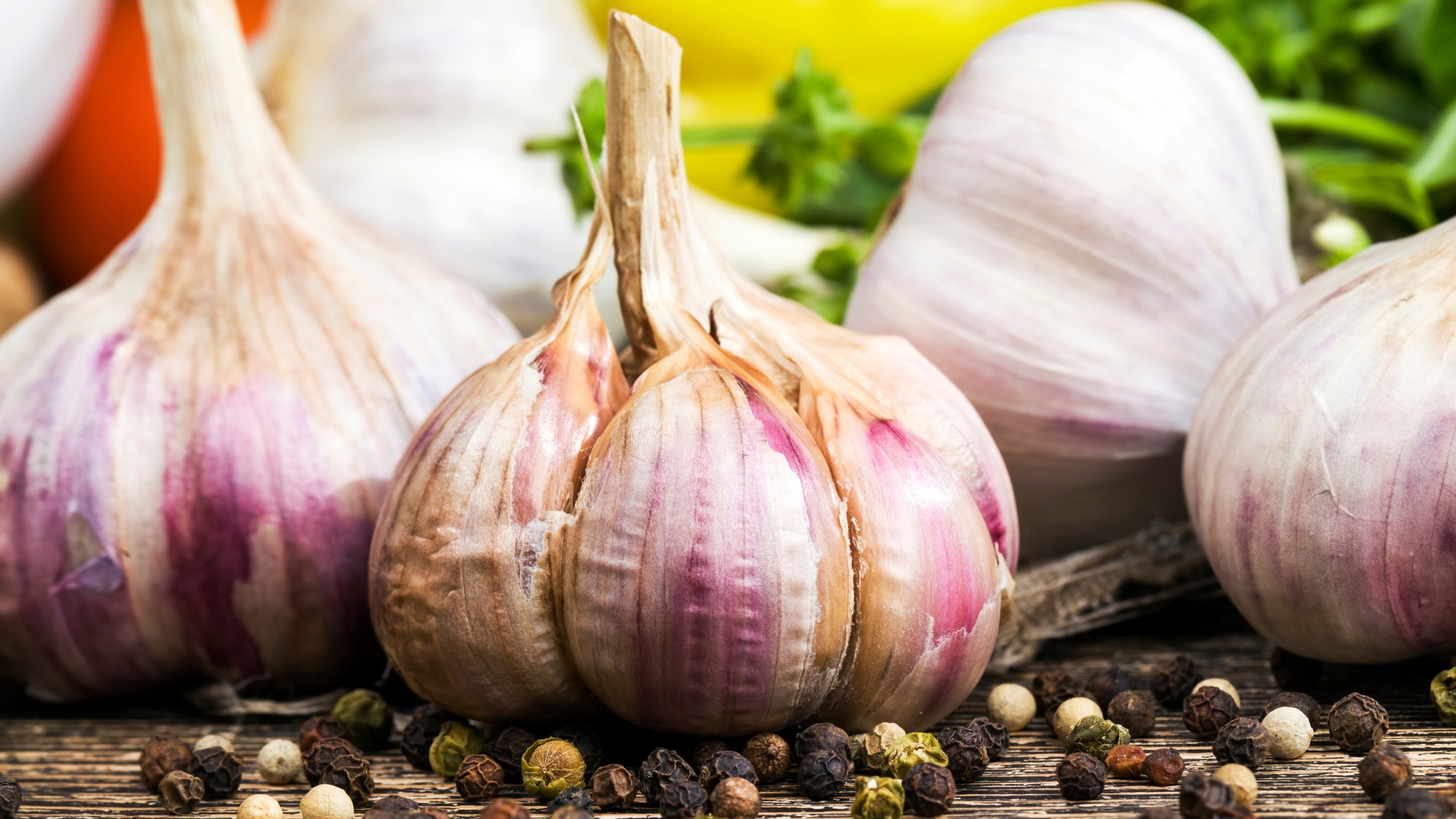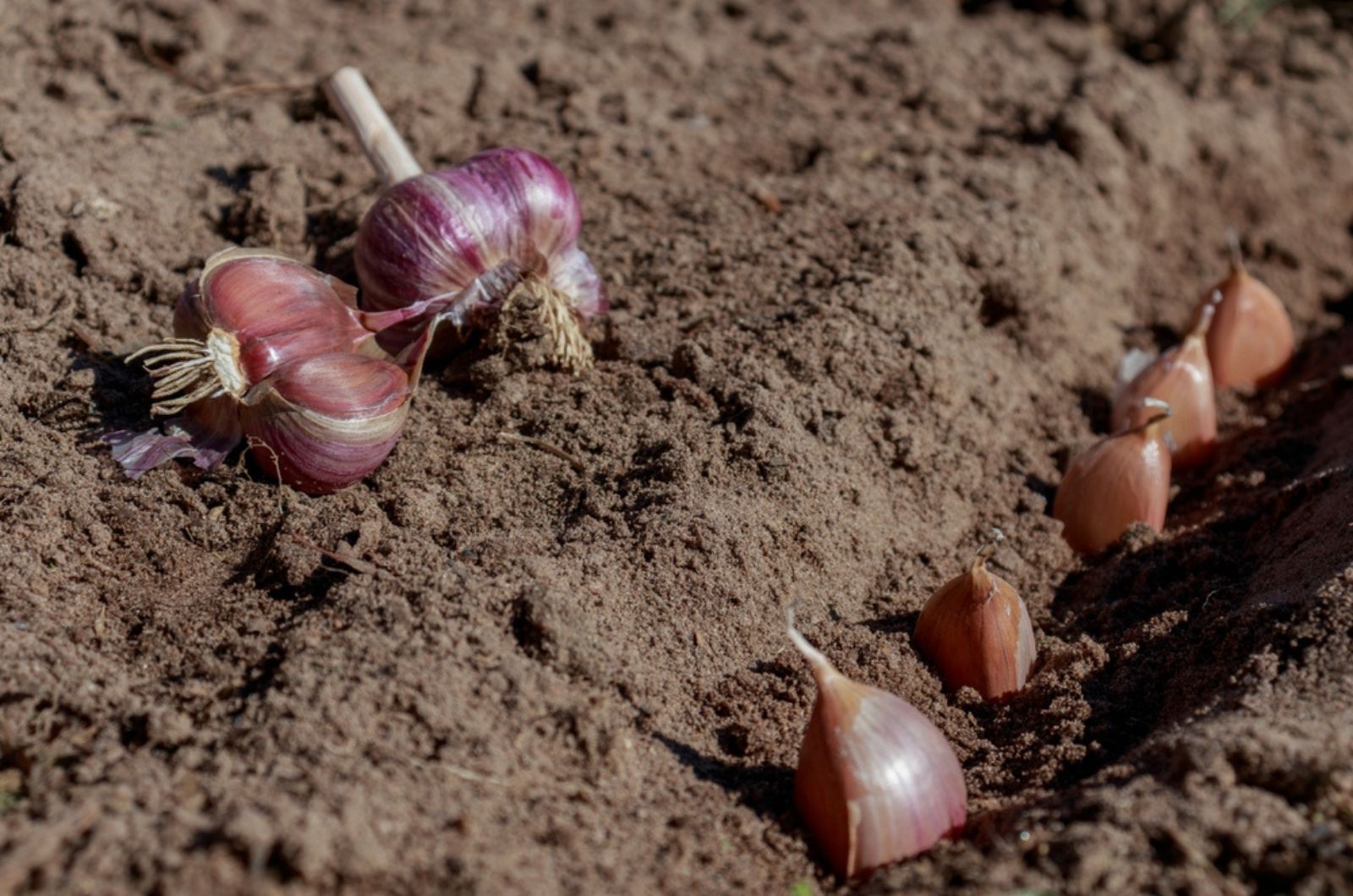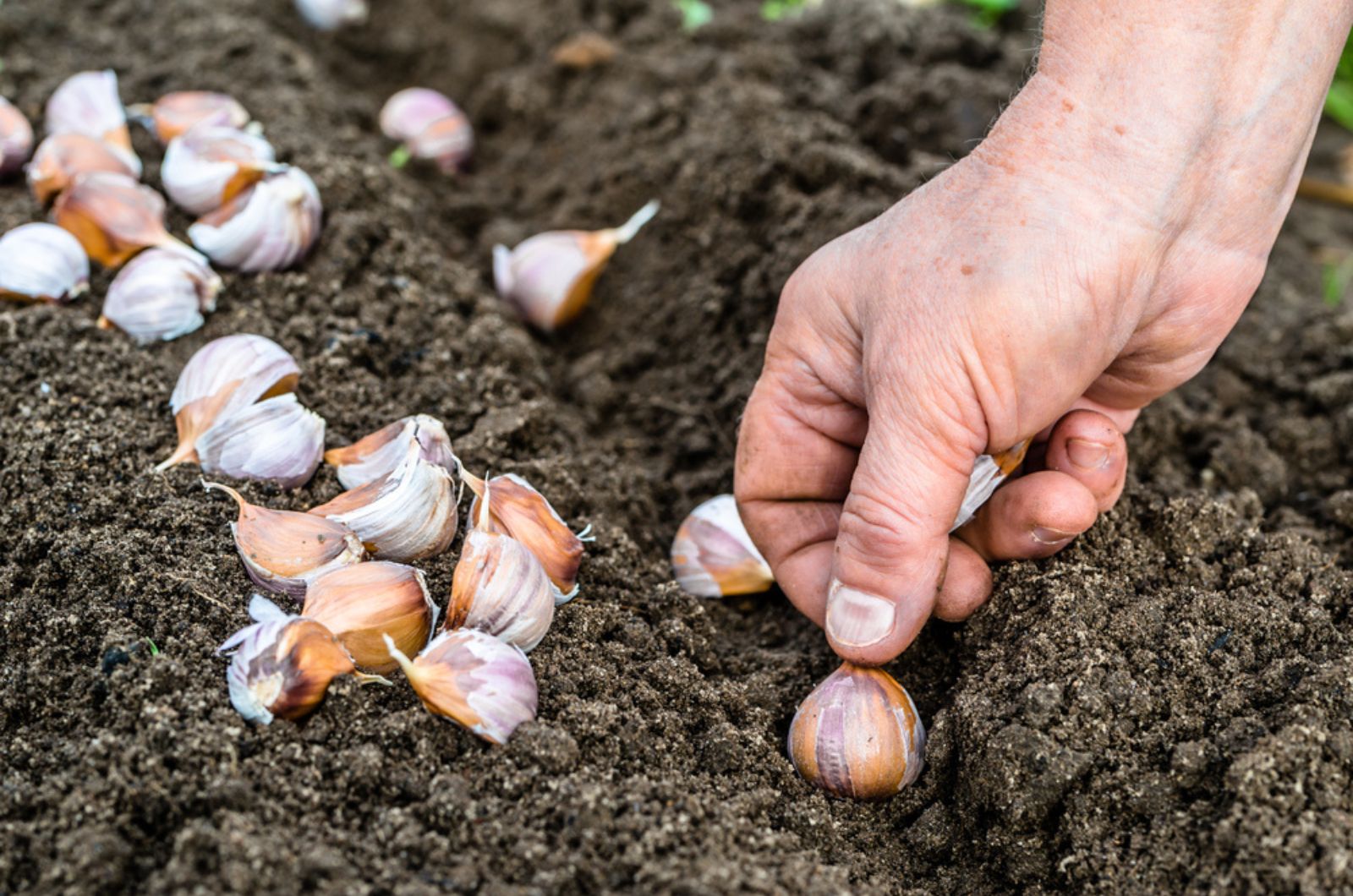Garlic is a popular veggie that is not so hard to grow – plant it in a well-draining, fertile soil with a lot of sunlight and you are good to go. While the garlic is growing, you should be aware that certain pests can attack your crops.
The most common pests in this case are bulb mites, creamy white pests that feed on the outside of the bulbs, leaving scars all over the cloves. An infestation can ultimately lead to stunted growth and the crop drying out.
The trick is to get ahead of an infestation because it spreads super quickly. This can be achieved by cleaning your cloves before planting or introducing beneficial insects.
Keep reading to learn more about the challenges faced by garlic growers, and you’ll also find a way to prevent them and grow the juiciest garlic ever!
Take A Closer Look At Your Garlic Cloves
Most gardeners use cloves instead of seeds when planting garlic. So, when choosing the cloves for planting, you should check the bulb for potential mite infestation first.
Pay close attention to the area beneath the roots, which is where the mites like to feed – the bulb may have soft places and begin to turn yellow as a result.
If you find mites but still want to use those cloves, there are a couple of ways you can get rid of them.
For instance, the University of Maryland Extension suggests soaking the cloves in hot water that has been heated to around 130 degrees Fahrenheit for a minimum of 10 minutes and a maximum of 20 minutes.
Using this method will make the bulbs sterile and get rid of the mites. However, keep in mind that treating with hot water might make the garlic cloves not grow as well because it lowers their ability to sprout.
What you can also do is soak the bulbs in a solution of soap and mineral oil (approximately 2% of each) for an entire day prior to planting.
Related: 13 Varieties Of Garlic Ideal For Fall Planting
Rotation Planting And Predatory Mites Will Fix The Issue
Since there isn’t a reliable pesticide to eradicate bulb mite infestations, you’ll have to find other natural ways to get rid of them. This includes rotation planting and introducing predatory mites.
The most commonly used predatory mite is called Cosmolaelaps claviger – once they’re in, they will start feeding on bulb mites.
Doing things like flooding empty fields and planting different types of crops can help prevent an infestation because bulb mites like to live in old plant leftovers.
A crop is considered non-host if it is unable to sustain a particular pest. This is why growing garlic after Brassicas like broccoli and cabbage should be avoided, as well as rotating grains and corn.
It’s really simple to rotate the crops in your vegetable garden – just make sure the crops you pick to rotate will support garlic.
What you should also pay attention to is the way you preserve your garlic after harvesting it. Since bulb mites like moist and warm conditions with temperatures over 50 degrees Fahrenheit, it’s better to store your garlic in dry, cool, dark places with proper air circulation.
The ideal temperatures for keeping garlic in good condition are between 60 to 65 degrees. If you accidentally damage your garlic, it’s better to throw it away because bulb mites might be attracted to it.
This might be useful: The 7 Garlic Growing Stages: A Complete Guide



